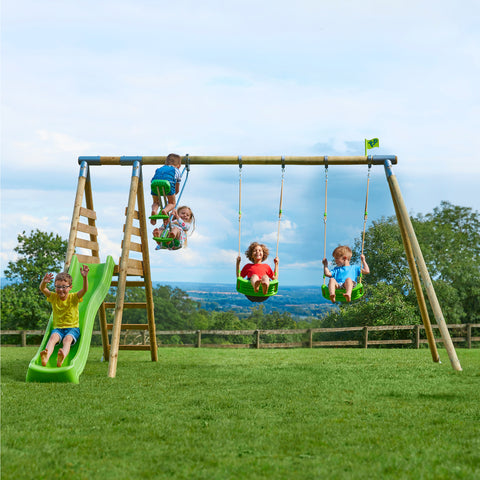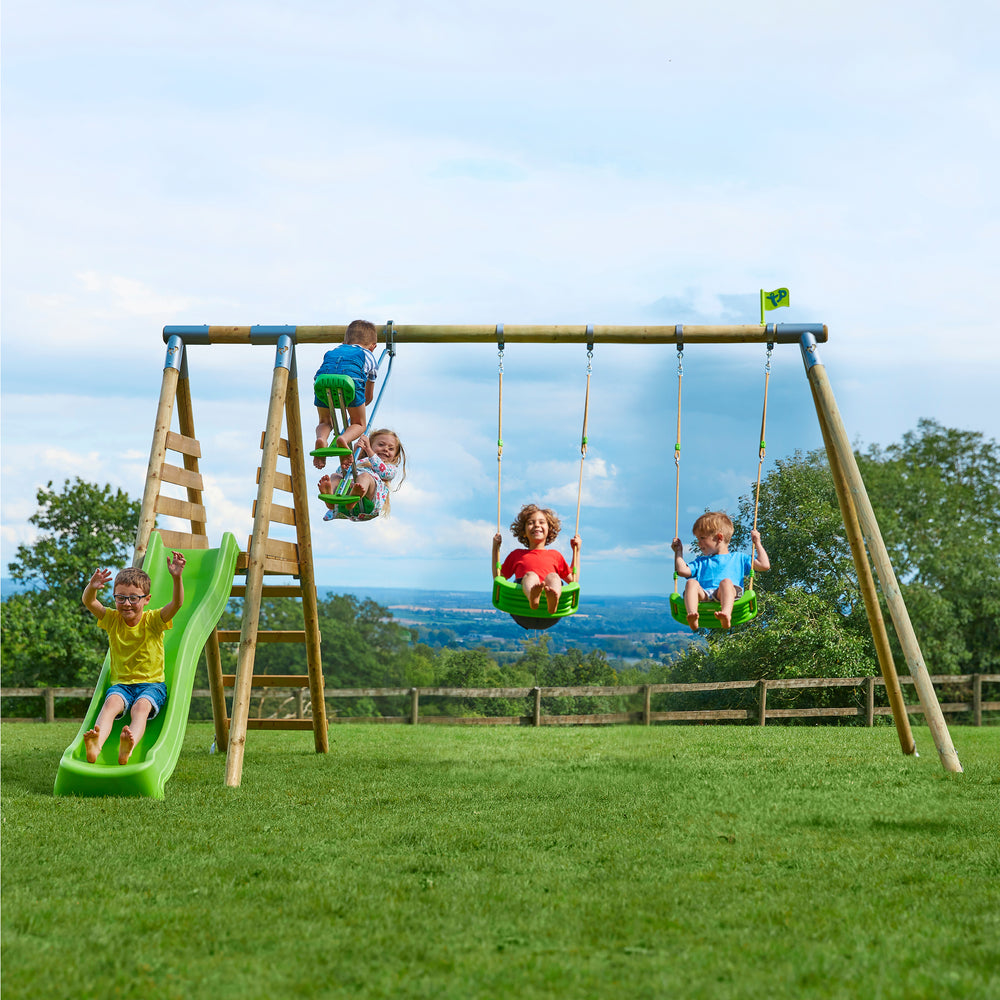Swings have long been a staple of childhood play, providing joy and entertainment while also offering a host of developmental benefits. From enhancing physical strength and coordination to fostering social interaction, the humble swing set holds immense value in a child's growth and well-being.
In this article, we will delve into the multifaceted advantages of swinging for children's development, explore best practices for safe use, and discuss ways to incorporate swings into structured play and educational activities.
How does swinging contribute to a child’s physical and motor skill development?
Swinging stimulates numerous facets of physical development, rendering it an indispensable component of any dynamic play environment. As children partake in the captivating motion of swinging, they engage in a rhythmic action to pump theirs legs and propel themselves forward, thereby significantly bolstering the strength of their lower body muscles. This consistent and repetitive action serves not just to build and enhance muscle tone but also plays a crucial role in boosting cardiovascular fitness and endurance, laying the foundation for a healthy lifestyle.

Furthermore, swinging actively fosters the advancement of fine motor skills and keen body awareness. The act of firmly gripping the chains or ropes of a swing necessitates refined coordination and dexterity, while the oscillating swinging motion presents a continuous challenge for children to maintain balance and exercise control. With repeated practice, these activities naturally lead to an enriched spatial awareness and a more acute sense of proprioception, enabling children to navigate their physical world with greater confidence and agility.
Beyond the tangible physical benefits of swinging, it also offers significant sensory stimulation, particularly targeting the vestibular system—the critical sensory system tasked with governing balance and spatial orientation. The soothing, rhythmic rocking motion inherent in swinging delicately stimulates the inner ear mechanism, thereby aiding children in developing a robust sense of balance and coordination, essential skills for daily activities.
Swings can further be integrated as pivotal elements of sensory circuits designed to enhance motor skills and coordination, where children transition from one activity station to another, each designed to target specific developmental milestones. Moreover, in the realm of education, swings emerge as practical tools for experiential learning, enabling children to delve into and explore the fundamental principles of physics and motion through direct, hands-on experience, thus fostering an intuitive understanding of these complex concepts.
What are the best practices for supervising children of different ages on swing sets?
To encourage safety of children on swing sets, careful supervision and adherence to safety guidelines is required. Supervision is especially crucial for younger children who may lack the coordination and judgement skills necessary for safe swinging. Parents and caregivers should closely monitor children during play, intervening as needed to prevent accidents or injuries.

When supervising children on swing sets, it is essential to consider their age and developmental stage. Younger children may require hands-on assistance and guidance, while older children may benefit from greater independence with occasional supervision. Establishing clear rules and boundaries for safe play, such as no pushing or standing on swings, helps mitigate risks and promote responsible behaviour. Enrol in Safety Programs to deepen your understanding and safety training on how to supervise and safeguard children at play.
Furthermore, regular maintenance and inspection of plastic and wooden swing sets are essential for ensuring safety in the workplace, school playground or public playground. Check for any signs of wear or damage, such as rusted chains, frayed ropes, or loose bolts, and promptly repair or replace any worn components. Additionally, adequate cushioning beneath the swing set, especially if the swings are close to any monkey bars or other play structures, such as a soft surface like sand or rubber mulch, should be provided to cushion falls and reduce the risk of injury.
Can swings be incorporated into structured play or educational activities?
Swings can undoubtedly be woven into the fabric of structured play and educational activities, offering a unique dimension to learning and engagement. By thoughtfully integrating swings into a variety of games and learning modules, educators and facilitators can foster an environment that promotes not only physical activity but also the reinforcement of critical developmental skills that are essential for children's growth.
For instance, swings could serve as a dynamic component of an obstacle course or a sensory circuit. In such setups, children could be encouraged to navigate through a series of stations, each designed to engage different sets of skills. As part of this circuit, swinging activities could specifically aim to bolster motor skills, enhance coordination, and refine balance. Such physical activities, when thoughtfully structured, can be a holistic way that children develop.

Moreover, swings can be creatively incorporated into cooperative games that necessitate teamwork and synchronisation. An activity could involve pairs of children swinging in unison to achieve a common goal, such as practising safe swing moves, reaching a certain target or completing a task together. This not only hones their ability to coordinate movements with a partner but also instils valuable lessons in teamwork and mutual support.
In education, the humble swing can transform into a potent tool for experiential learning. Educators can ingeniously employ swinging activities to concretise concepts of physics, such as gravity, momentum, and force. Children learn through first-hand experience on swings, tangibly exploring these abstract concepts, thereby deepening their understanding and retention of the subject matter. Swinging activities can also double as a therapeutic or sensory break for children who might benefit from such proprioceptive input.
Conclusion
In conclusion, the multifaceted benefits of incorporating swinging into children's play and educational activities cannot be overstated. From enhancing physical coordination and strength to fostering social development through connections, sensory integration, and conceptual understanding, kids' swings offer invaluable opportunities for comprehensive development.
By ensuring the safe and thoughtful incorporation of swings into structured activities, educators, parents, and caregivers can unlock a myriad of developmental benefits, making swings a perennial favourite in the arsenal of educational and recreational tools.




